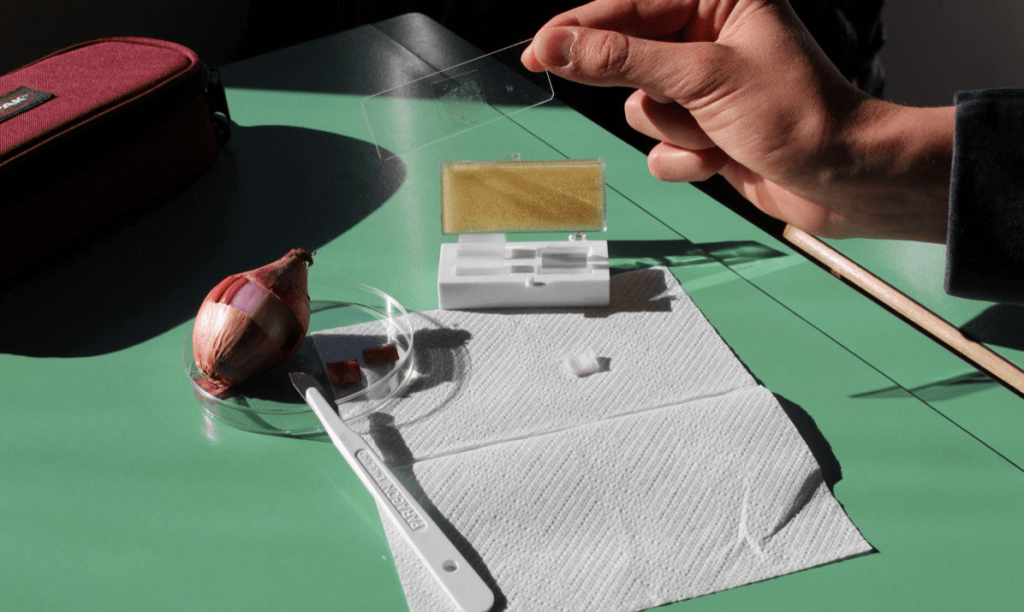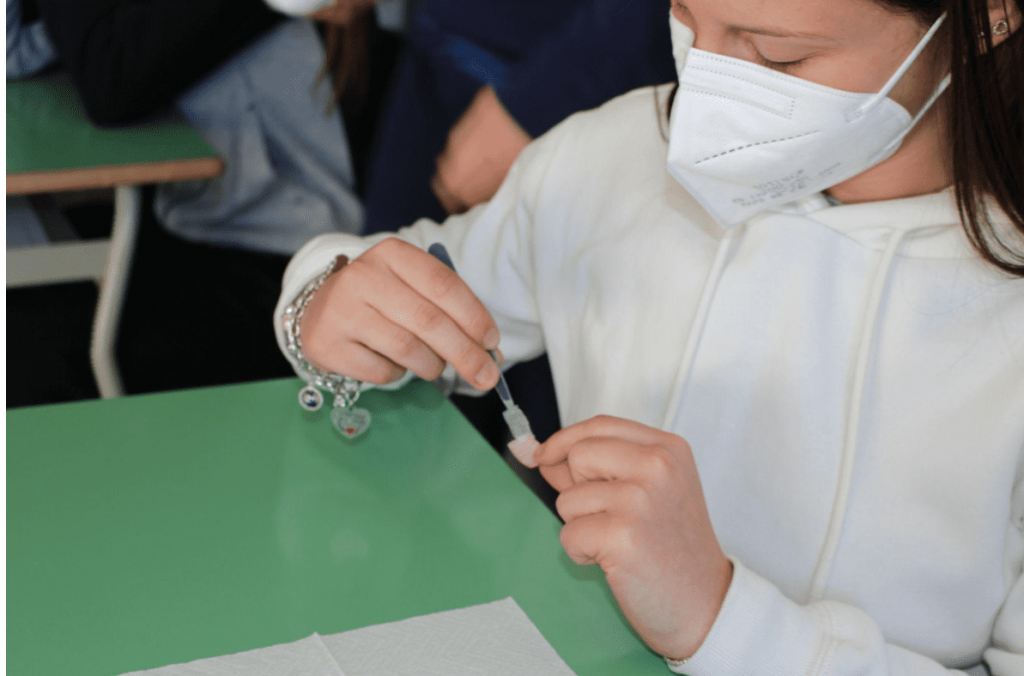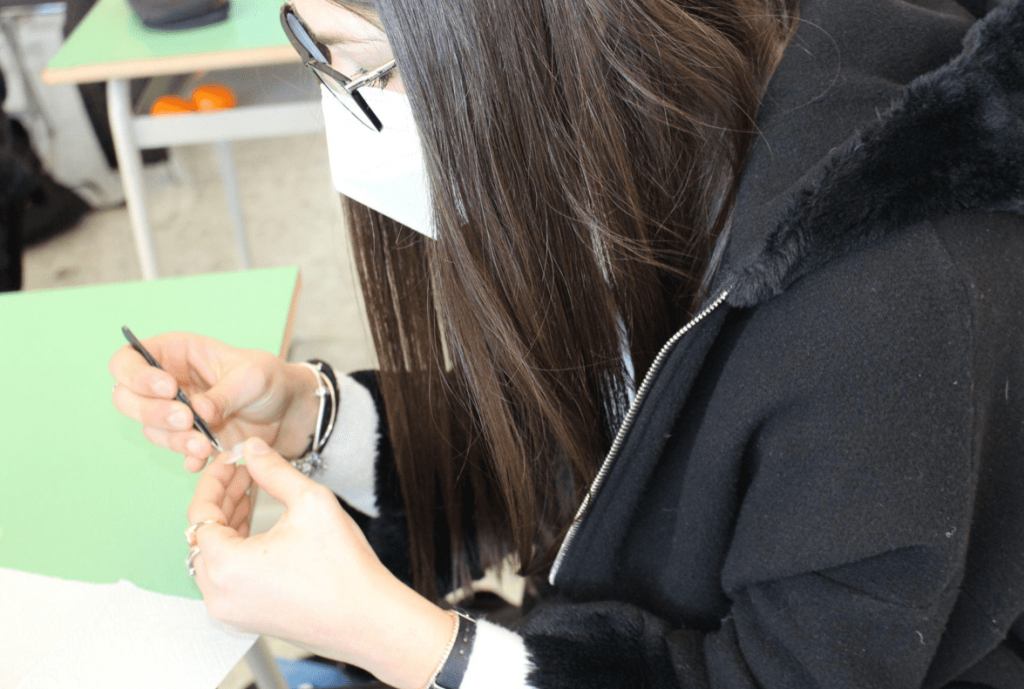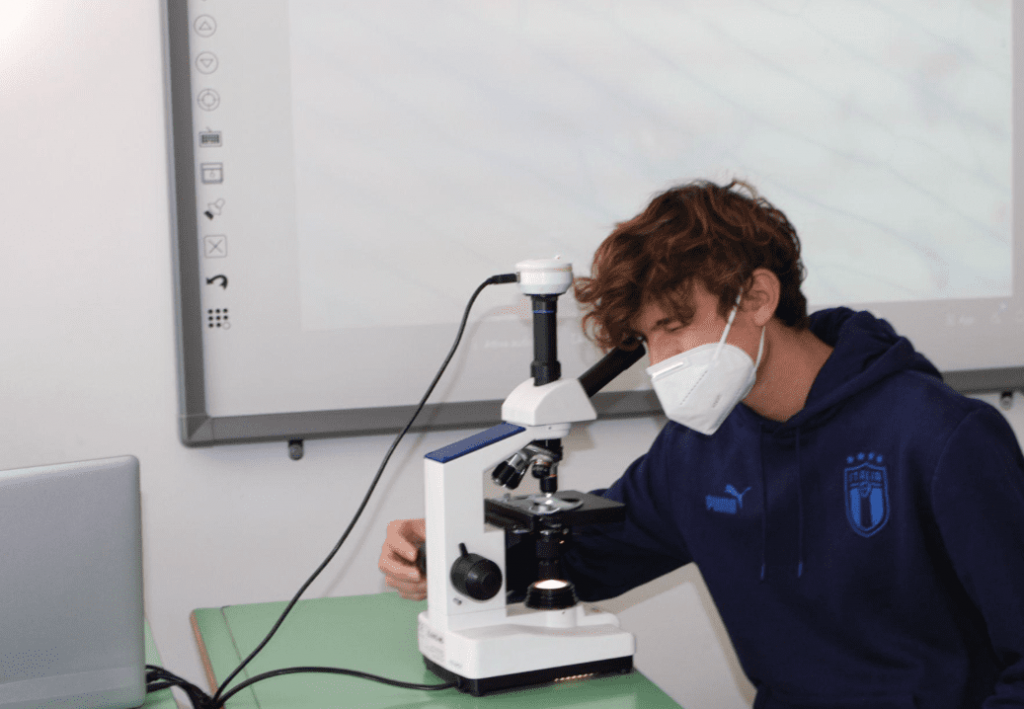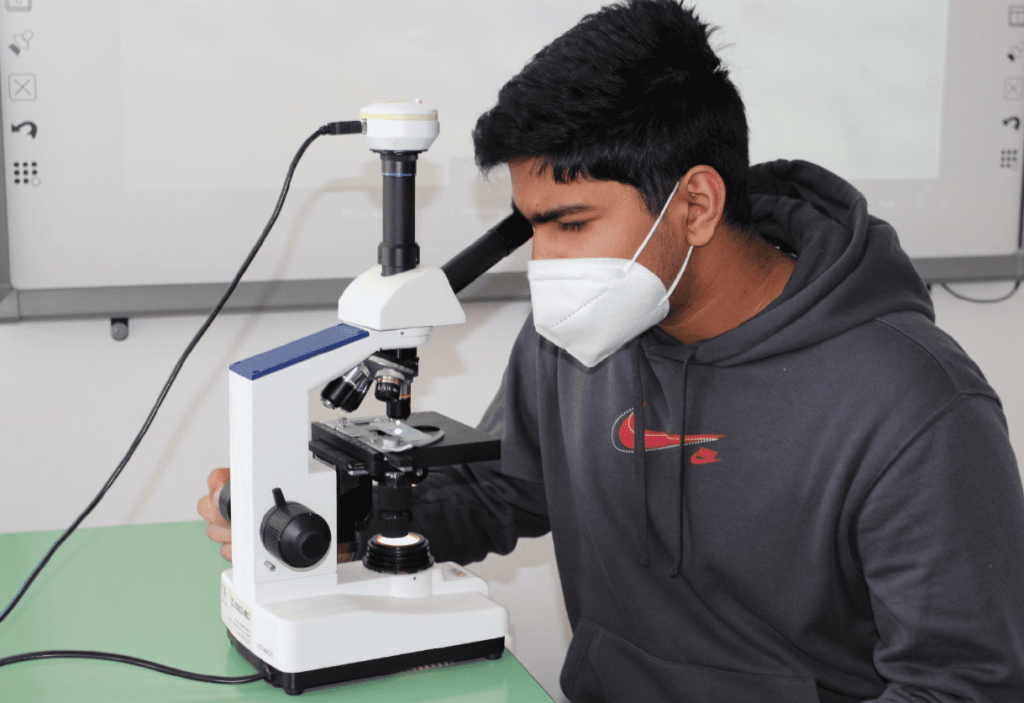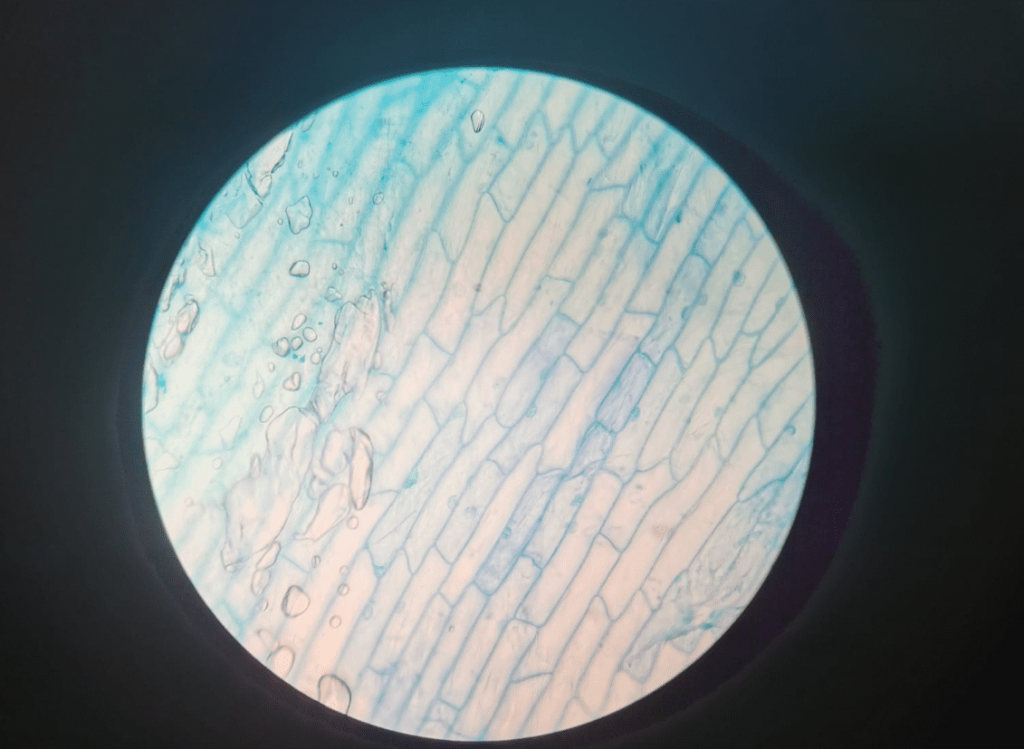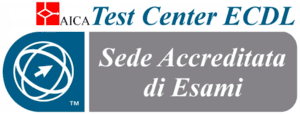I ragazzi del 5° Liceo Scientifico hanno trattato con Lugol, un composto contenente Iodio, pezzetti di zucchine, melanzane, formaggio, pane, castagne, patate, mela e biscotti. Lo Iodio, intercalandosi nella struttura elicoidale dell’amido, cambia colore e da rosso diventa blu scuro. L’analisi del viraggio del colore permette quindi di rilevare la presenza o meno dell’amido in tutti gli alimenti analizzati.
Our brilliant 5th year Scientific High School biologists in training put a variety of foods to the starch test. In order to identify starchy foods, they employed a testing technique which uses iodine to detect foods containing starches. When the iodine comes in contact with starchy foods it automatically turns a blue/black colour. Our students tested a variety of foods such as zucchini, biscuits, eggplant, bread, chestnuts, apples and of course potatoes. Take a look at their results.
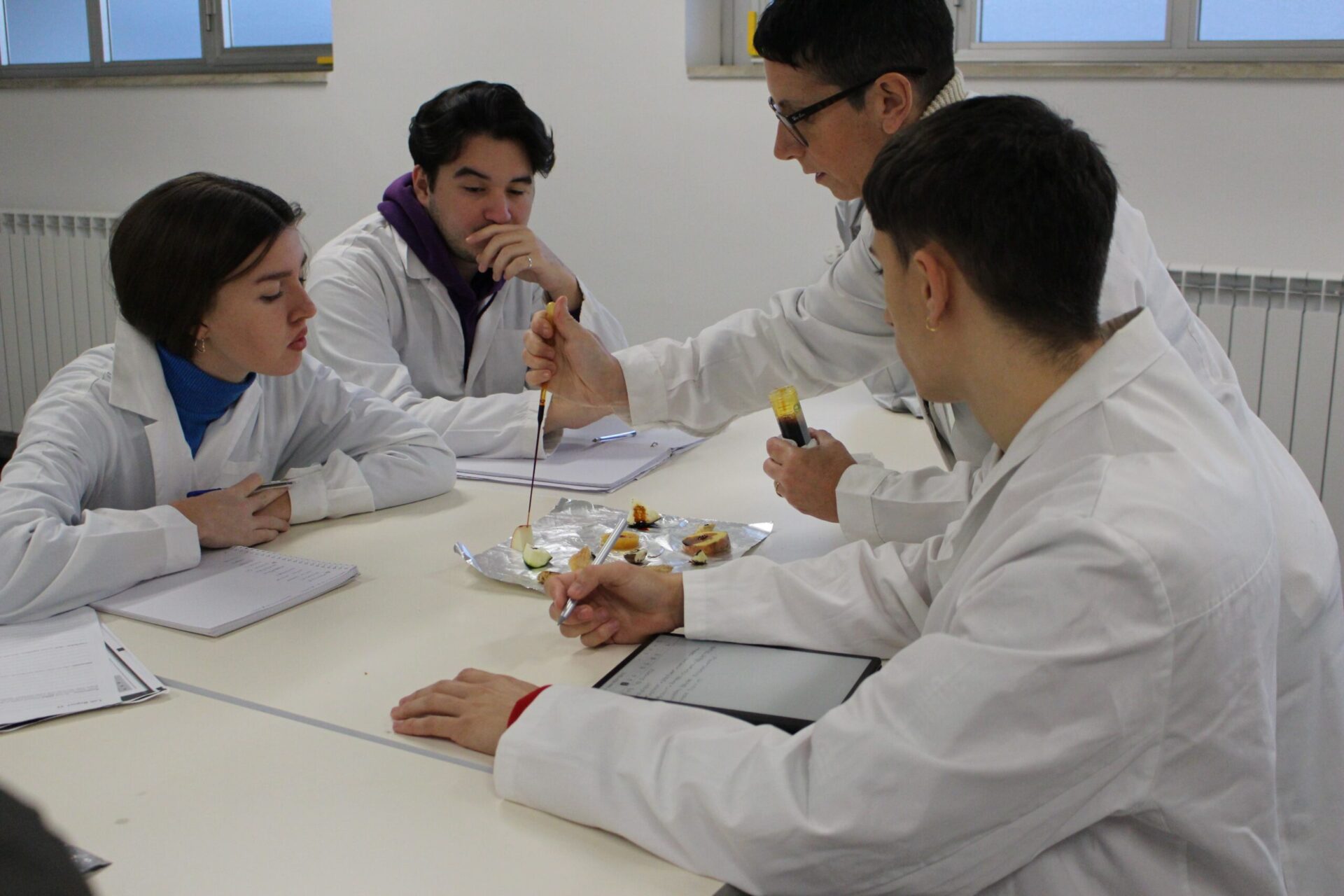
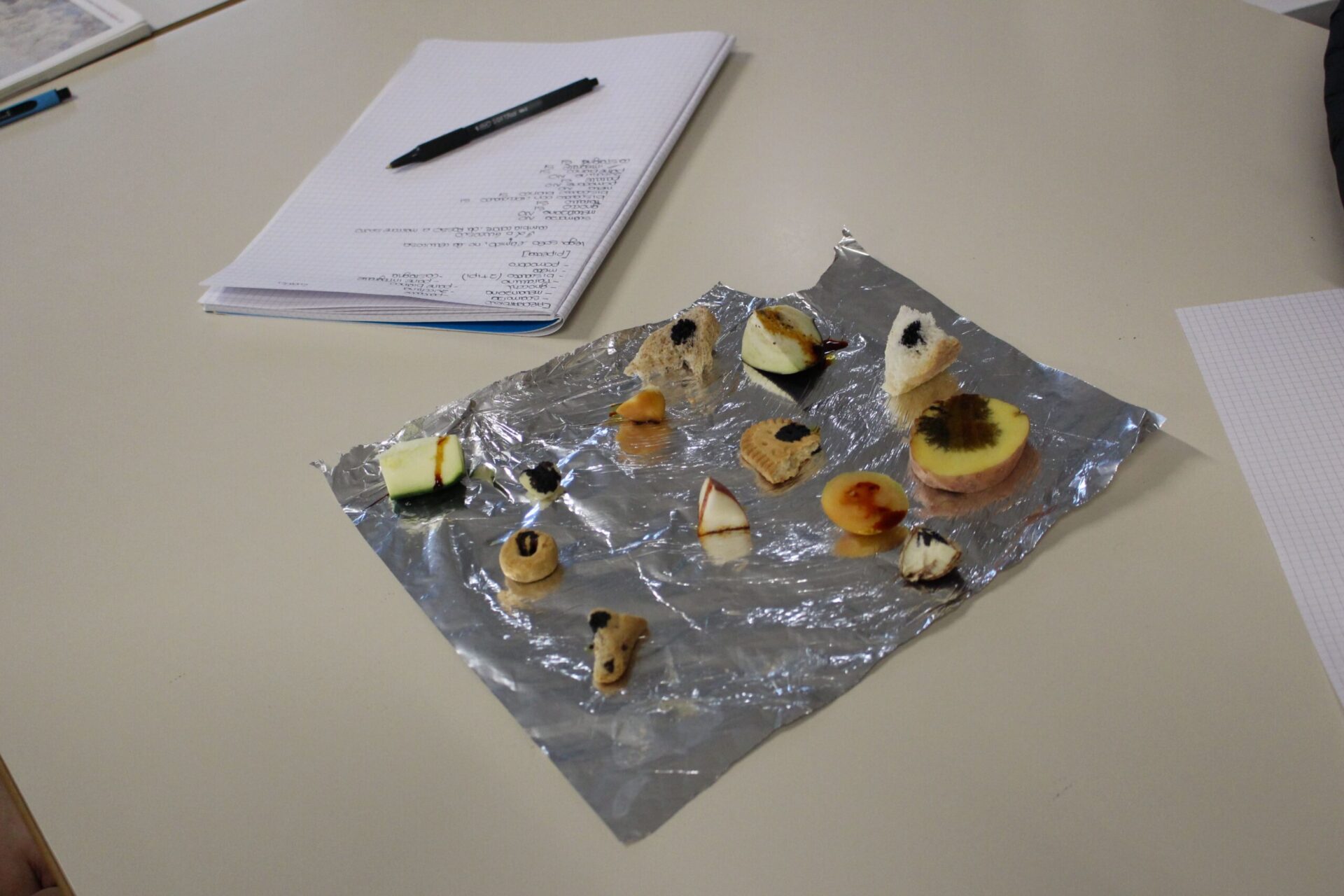
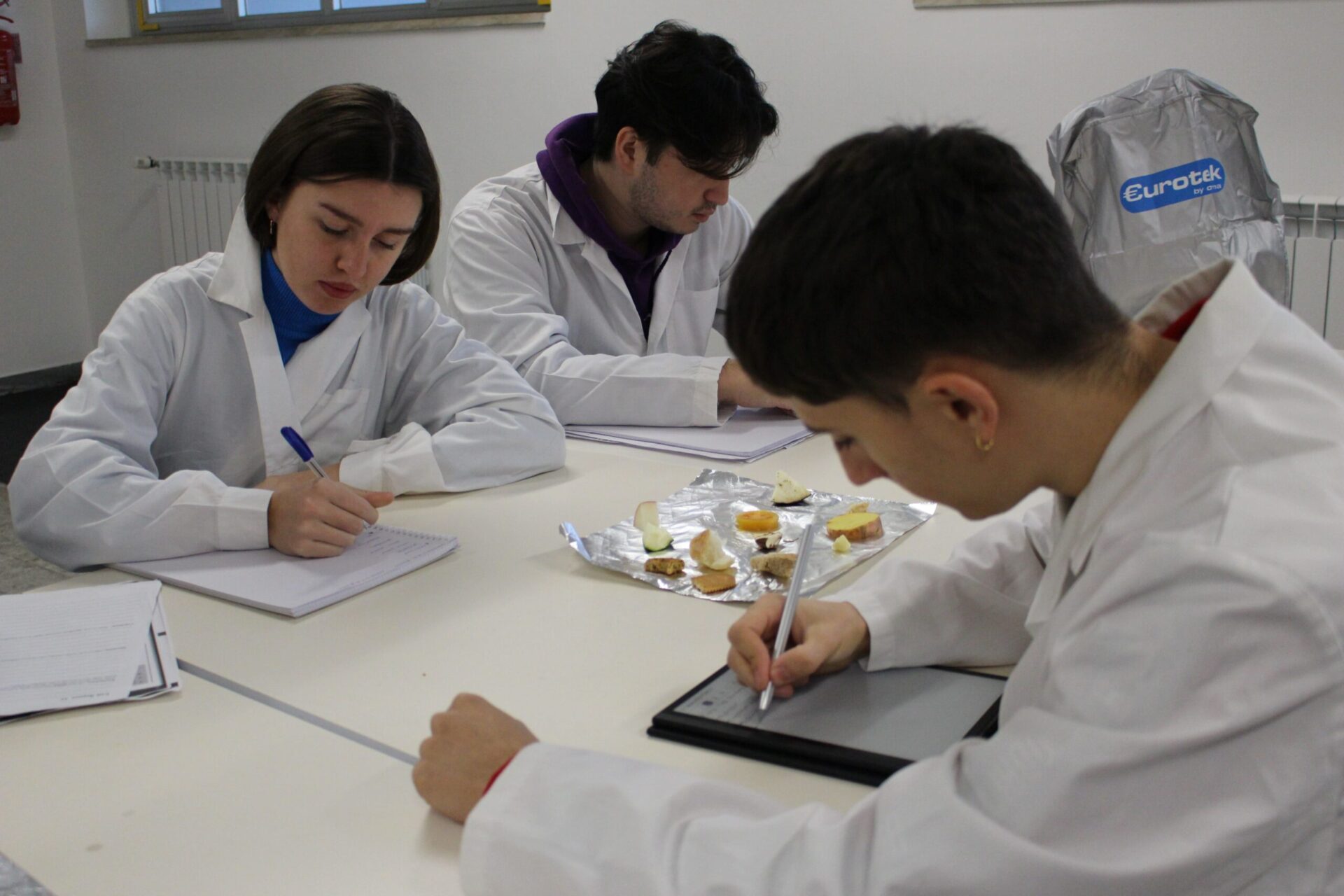
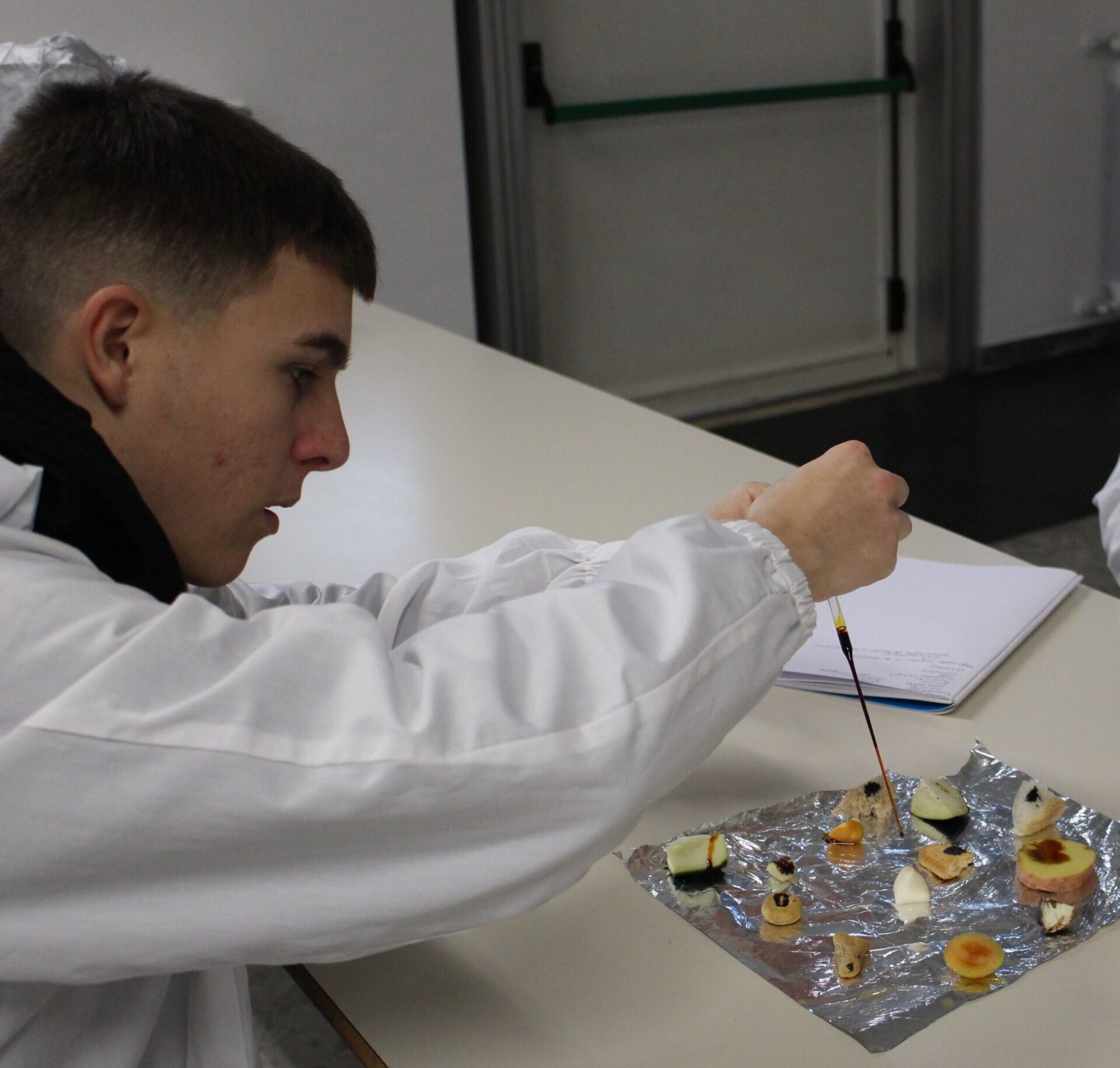
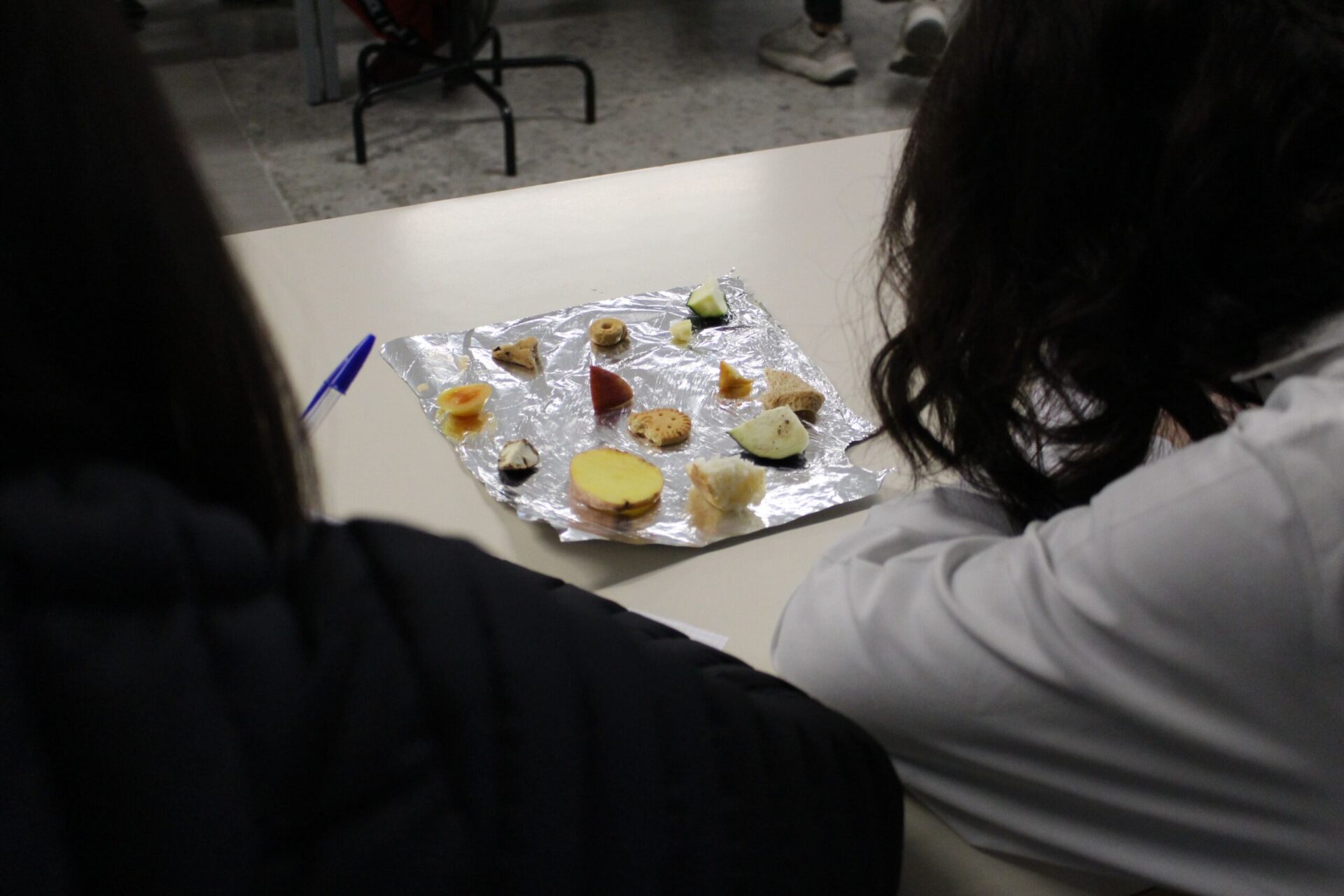
La prima regola di un bravo Ricercatore??? Saper preparare una Stock Solution e le sue diluizioni!
Lo sanno bene i ragazzi del nostro Liceo Scientifico che hanno preparato soluzioni concentrate e diluite di Cloruro di Sodio a varie concentrazioni molari colorandole e utilizzando una App per misure l'intensità e verificare l'avvenuta diluizione. Well done, ragazzi!
Using their knowledge of solvents and solutions, our scientific high school students tried their
hand at creating a stock solution. Stock solutions are a vital resource in a lab. They can help a scientist save a lot of time, can help in conserving materials and in improving the accuracy with which they prepare solutions. From this stock solution the students then prepared two dilute solutions. Finally, they
calculated the concentrations of each solution expressed in molarity. Great work!

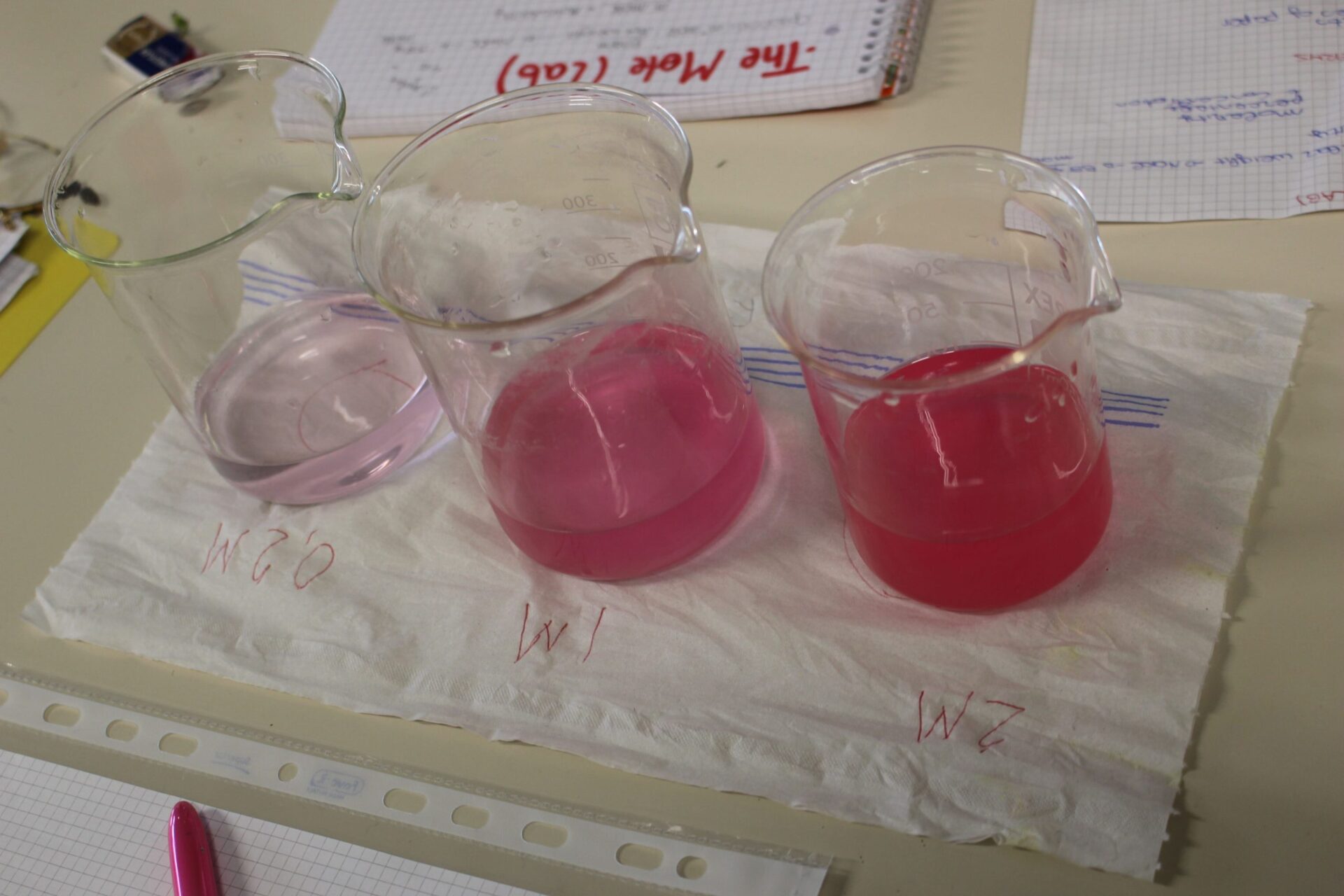


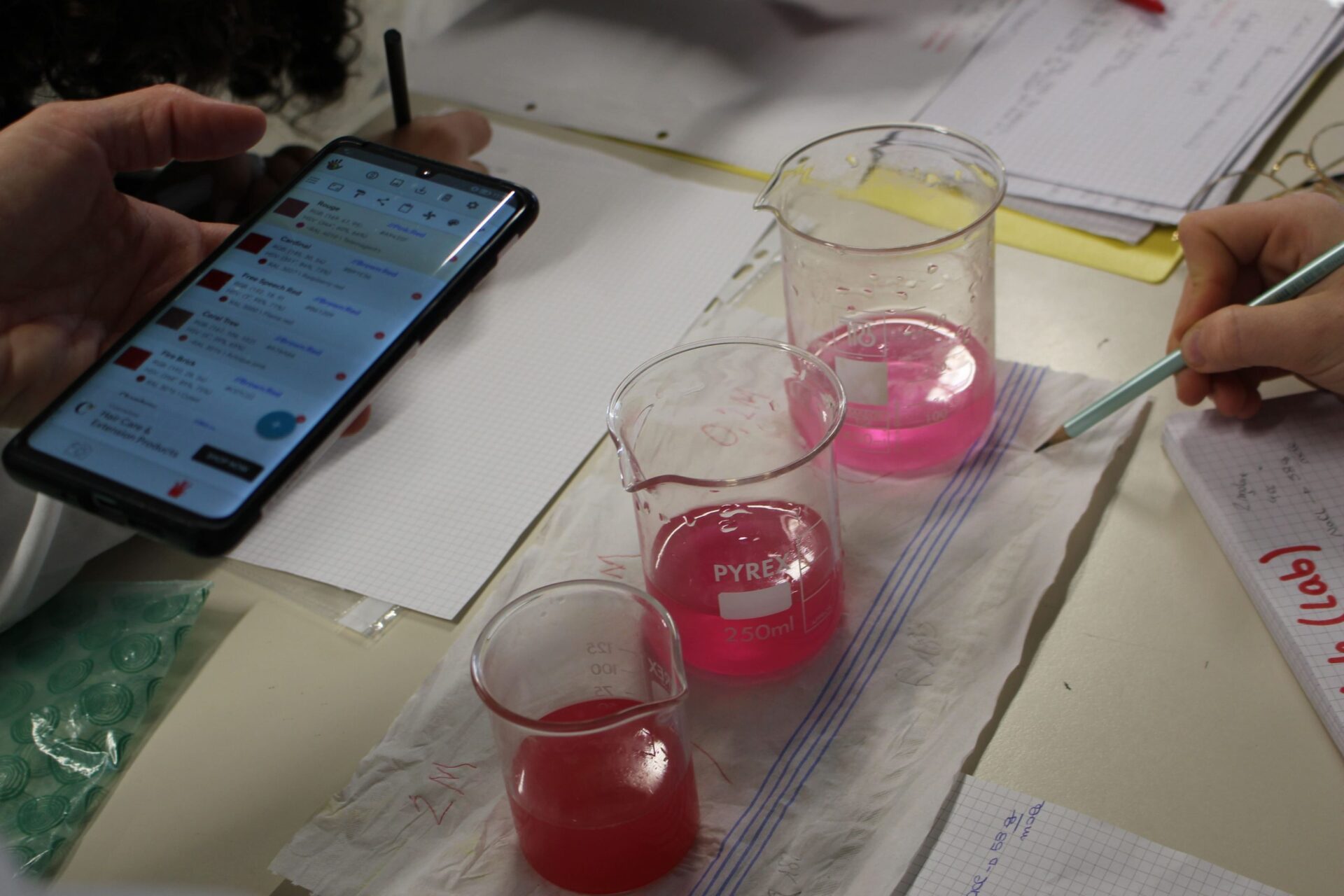

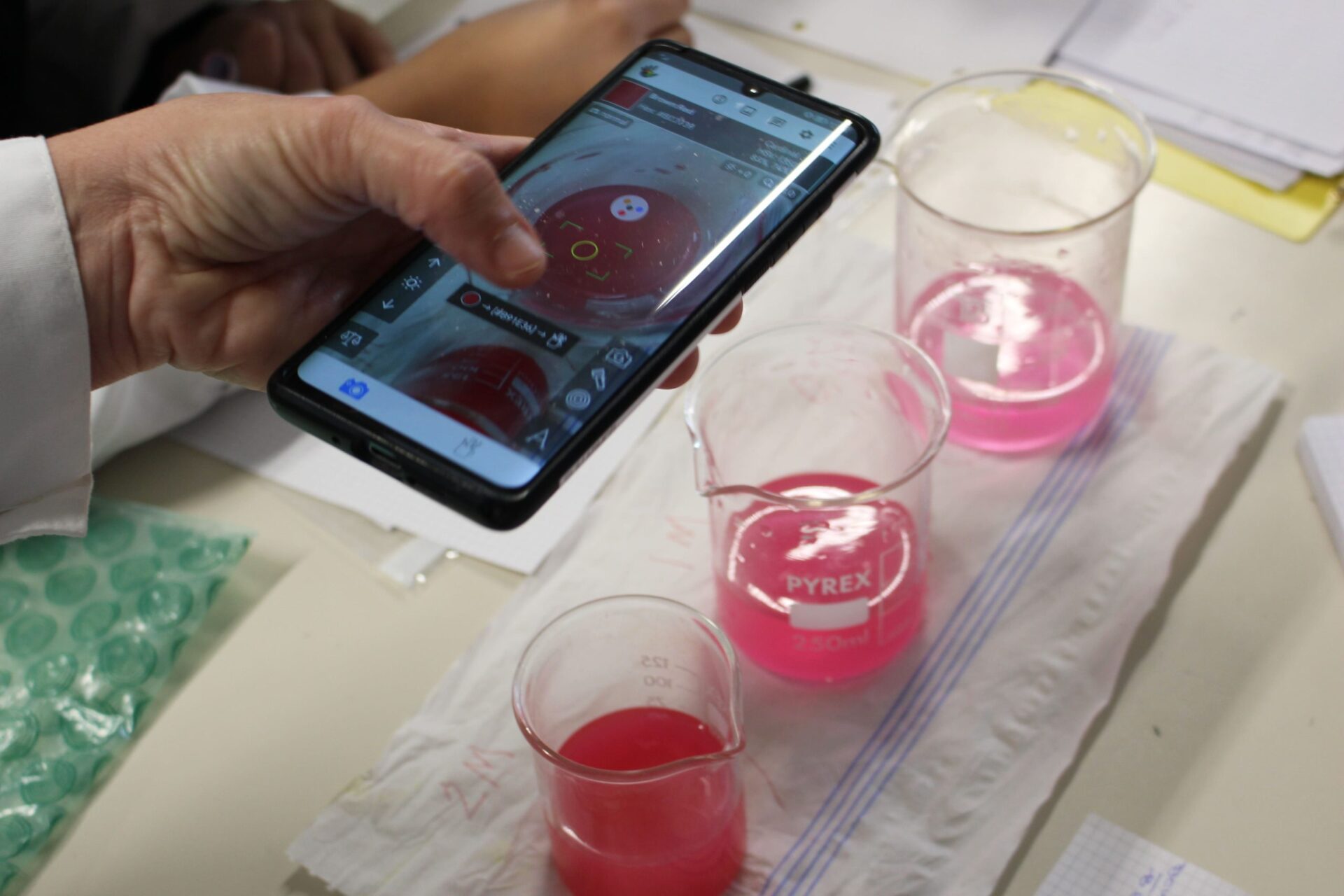

A “Flame Test” is used to detect and analyze the presence of certain elements in the given salt or
compound. Lilac, red or orange-yellow, depending on the color of the flame given, can inform a scientist as to what substance they may be handling. Our third year Scientific High School students experimented with three different substances, lithium chloride, potassium chloride and sodium chloride with interesting and sometimes surprising results.
Il saggio alla fiamma viene utilizzato per rilevare e analizzare la presenza di determinati metalli in un sale o composto. La colorazione lilla, rosso o giallo-arancio della fiamma può fornire informazioni allo scienziato su circa la sostanza presente nel composto che sta testando. I nostri studenti del terzo anno del Liceo Scientifico hanno condotto il saggio utilizzando tre diverse sostanze, (cloruro di litio, cloruro di potassio e cloruro di sodio), ottenendo risultati interessanti e sorprendenti.

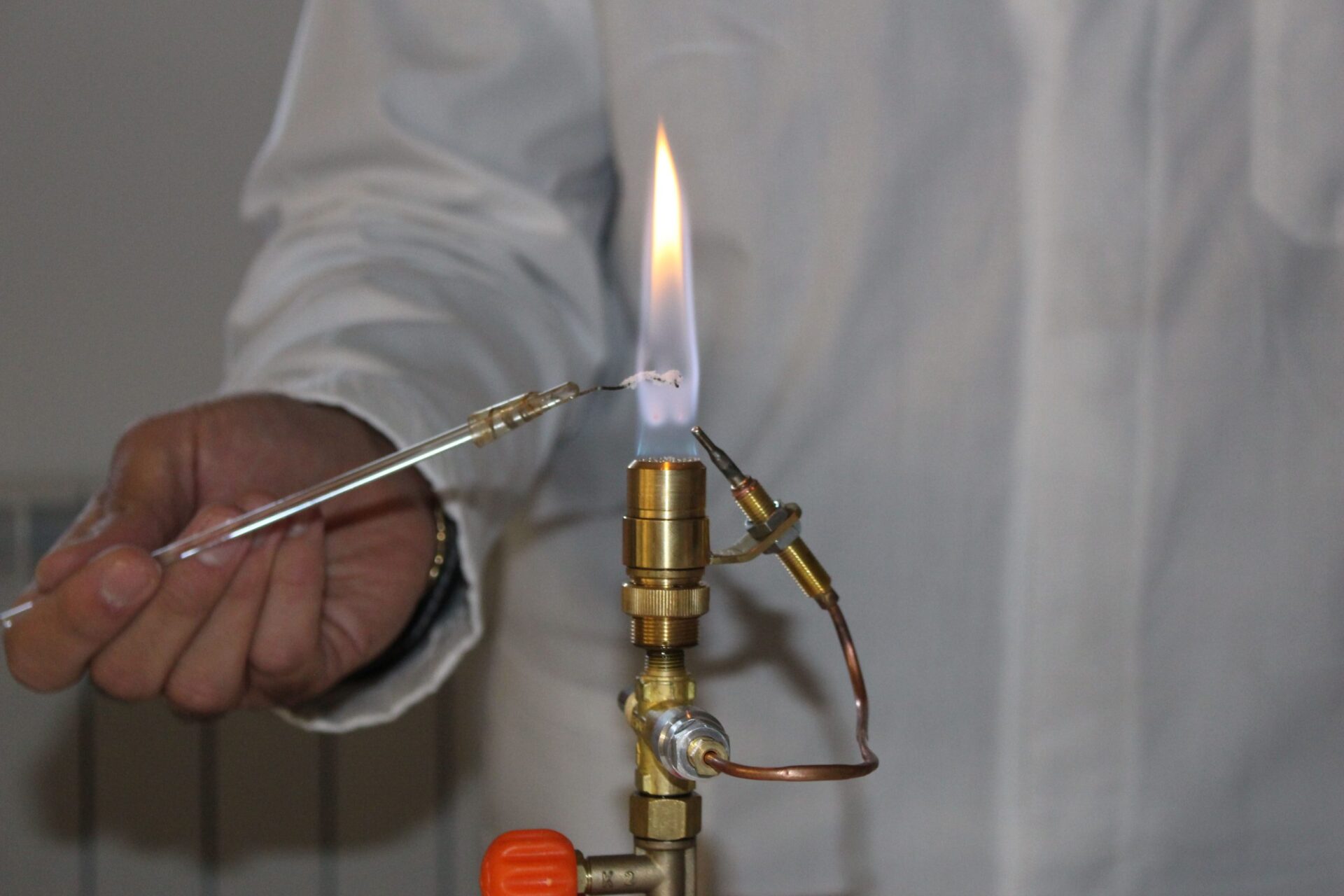


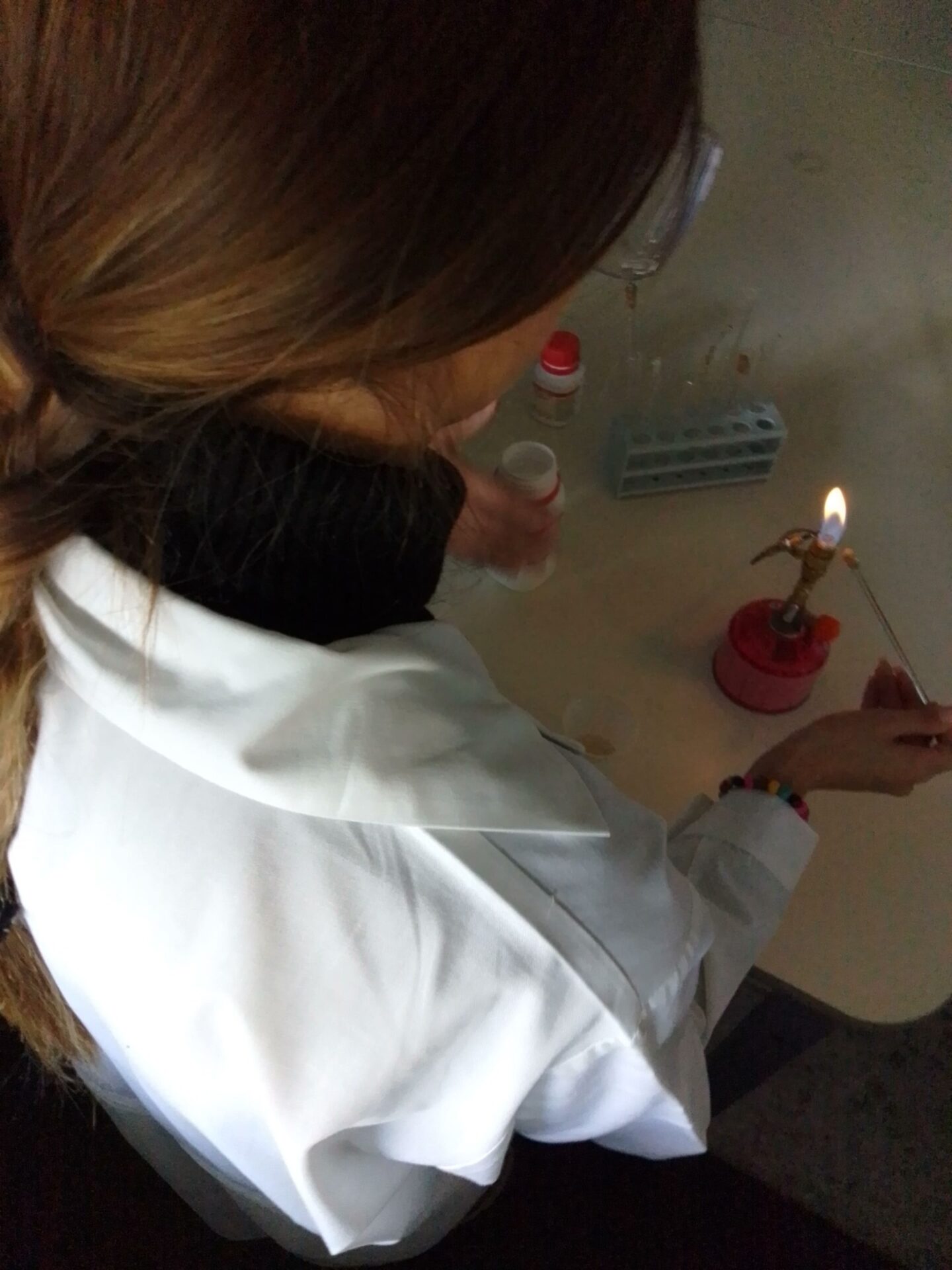
Classe: 2° Liceo Scientifico English +
Materia: CLIL (Scienze)
Attività: Osservazione delle cellule della cipolla
Our second-year Scientific High School students put their English language skills to use as they participated in a hands-on STEM Lab as part of their CLIL (Content and Language Integrated Learning) Science lesson. After studying the structures which make up cells and comparing and contrasting animal and plant cells, it was time to apply their knowledge and identify these structures utilizing a microscope. The Lab began with the extraction of a small piece of the epidermal layer of skin from an onion, followed by the preparation of a wet-mount microscope slide and finally the viewing of the specimen using a microscope.
